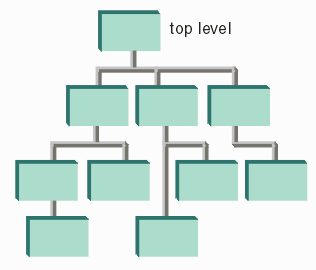This application note explains in some detail the use and advantages of off-line processing of very large GDSII files. But first some background on how the GDSII database is constructed and what steps must be taken to view part or all of the database is appropriate.
The GDSII database is hierarchical -- that is one can define a group of entities once, give this group a "name" and then "refer" to it by name or "place" it as many times as needed. The group is called a STRUCTURE, and the reference to a structure is called a SREF in GDSII's terminology. Since integrated circuits utilize the same cell many times, the GDSII database is quite efficient in describing an IC's layout. There is no limit to the levels of references - a STRUCTURE can contain references to other structures and so on ... However self-referencing is not allowed. GDSII does not impose any order on which structures are defined or referenced first. That is, one can refer to a STRUCTURE early in the database and then define it later on in the database. The result is that one can define an incredibly complex design with a compact and efficient database.

There is a high cost for the efficiency of GDSII when it comes time to display or otherwise process the data. That is because one cannot "extract" or calculate what entities are located in a particular part of the design without traversing and exploding the hierarchy. For small designs this is not a serious problem but for today's large chips the time required to traverse a 10 or 20 GB database and to do the exploding (or hierarhy flattening computations) can be extremely slow -- minutes of even hours. This means that panning or zooming through a large database becomes virtually impossible.

